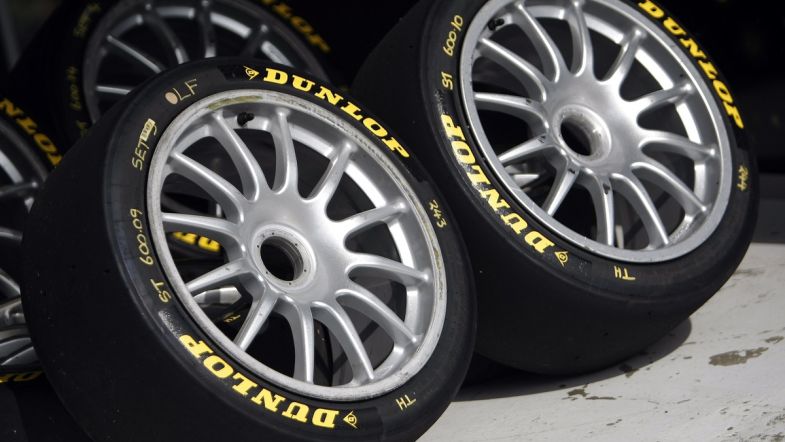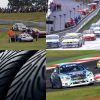Thruxton tyres: Between a rock and a hard place
There are a few things that are guaranteed on a yearly basis when the BTCC rolls into Thruxton for the annual visit to the quickest circuit on the calendar.
None of the cars will fit into the pit garages. The WiFi in the media centre will fall over at some point. The press will get excited at the prospect of watching trackside from an oversized garden shed.
And tyres will be an issue.
For as long as I can remember, punctures have been a problem at the Hampshire circuit as teams and drivers try to push the boundaries to secure the quickest lap time, whilst there are plenty of examples across the years of drivers who have seen a tyre failure rob them of a good result.
It is partly the issue of managing tyres that makes Thruxton such a challenge, with the abrasive circuit and the high-speed curves that follow one after the other from Cobb right through to Club putting immense pressure on tyres – and the front left in particular.
Whilst there were other failures during the 2016 race weekend – Tom Ingram suffered a front right puncture in FP1 – many were on the front left of the car, with Adam Morgan ending up in the wall at Allard in first practice and a front left failure being the cause of the accident involving Matt Neal that would end with the opening race being red-flagged.
Although there were examples of some teams going beyond the suggested limits handed out by Dunlop to try and gain an advantage (mainly in practice), the majority of the failures across Saturday’s running and then in the opening race came on cars that were complying with the set-up suggestions made by tyre technicians at the circuit – something which is the norm during a Thruxton race weekend.
But there were a series of circumstances that conspired to create an issue that no-one had seen coming, and one which ultimately had to be resolved one way or another.
For a start, the track temperature was much higher, hitting a maximum of 38.3 °c during FP2 on Saturday and then reaching 40°c during race two on Sunday; that race day high being almost double the temperatures seen at the circuit in 2015.
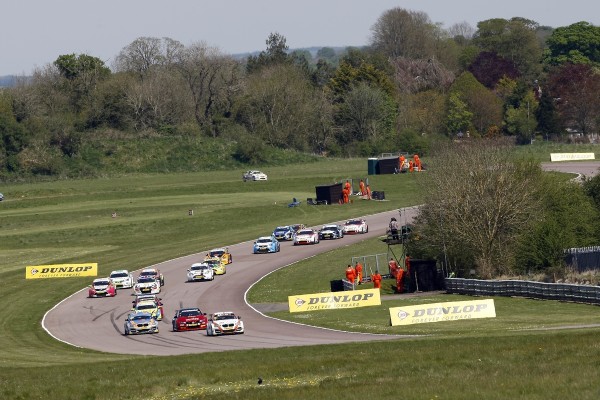
Then there was the introduction of the new RML-specification standard parts into the series this season, which placed a different load on tyres compared to the GPRM components they replaced on a number of cars across the grid.
Added to the fact that Thruxton as a circuit is forced to operate to a strictly limited numbers of days each year with little by way of testing – thereby meaning teams were effectively coming into the weekend ‘blind’ – and it’s easy to see why problems arose.
That’s not to say however, that the problems were expected – at least not the levels that would require laps to be cut from races two and three…
“When we suffered a tyre failure with Mat [Jackson] in race one, I was shocked as we had played the game,” Motorbase boss David Bartrum told TouringCarTimes. “We knew that tyres can be a problem at Thruxton and even more wary because of the fact we were carrying some weight, so we took a cautious approach and Mat wasn’t doing anything drastic when it exploded coming up Woodham Hill. There was no warning as you would have had with the old tyre, it just went – and ripped the front end of the car to bits.
“It was clear there was a problem when TOCA took the decision with Dunlop to reduce the length of the following races. It’s frustrating because you know that Thruxton is a circuit where tyres can be problematic but changes to the cars this season put added pressure on the rubber and it was mainly cars using the RML parts that suffered.
“The biggest problem is that there is no testing here. You come along in February to do some running, but when you then come back at the start of summer and the track temperature is in the high 30s; it’s totally different. TOCA has a duty of care to the drivers and they made the right call, but the fact is that something needs to be done. Thruxton is a unique circuit, but when you are thrown a curveball as we were, it’s clear that we need to have more testing of that tyre at the circuit.
“The lack of testing meant Dunlop weren’t even allowed to be prepared for the conditions we faced, and when you can’t be sure people will follow the recommendations they are given, you can see that the decision to shorten the races was the only decision to be taken.”
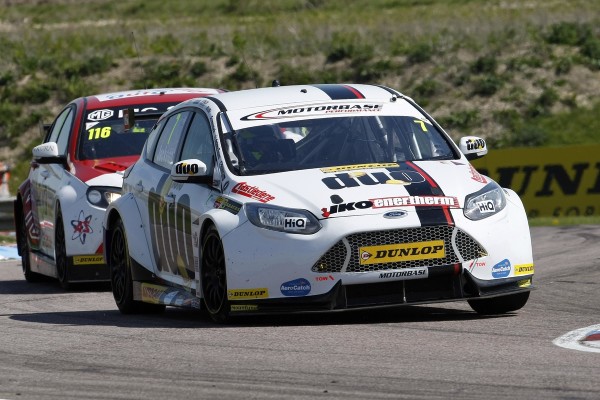
There were plenty of people who agreed with Bartrum about the decision to shorten the races but at the same time, there were also dissenting voices with the paddock who felt that the decision was penalising those who had spent Saturday setting up their cars to deal with the challenges of a hot 16 lap race.
Whilst it was perhaps to be expected that WSR wouldn’t be happy given the potential for rear wheel drive cars to benefit from the conditions, AmDTuning.com boss Shaun Hollamby and BKR chief Nico Ferrari were also amongst those to query the move, as was BKR driver Aron Smith – despite the fact he had been one of the drivers to suffer a failure during Saturday’s track action.
There were also questions from MG’s Ash Sutton; someone who could have done with the additional laps in order to try and recover from an incident in race one that would then leave him on the back foot for the remainder of race day.
“Personally I wish they’d kept it at 16 laps,” he said. “We get warned what we can and can’t do, and Dunlop do make it very clear which kerbs we can use. We obeyed it and we didn’t have any failures in the race. Our tyres looked mint, and the teams who didn’t obey were the ones that suffered.
“In my opinion, it’s people not obeying the rules that is the reason why we lost the laps. Unfortunately, it didn’t work in our favour and we could’ve done with those laps to get through the traffic…”
There were plenty of comments on social media from people who felt short changed by the decision to reduce the race lengths, with some going so far as to suggest that they should be offered a refund on their tickets.
What should be clear though is that no-one wanted to see races cut in length, but at the same time, no-one wanted see a repeat of the kind of incidents that were witnessed at Church two years ago – something which was a real possibility should a tyre let go at the quickest corner in British motorsport.
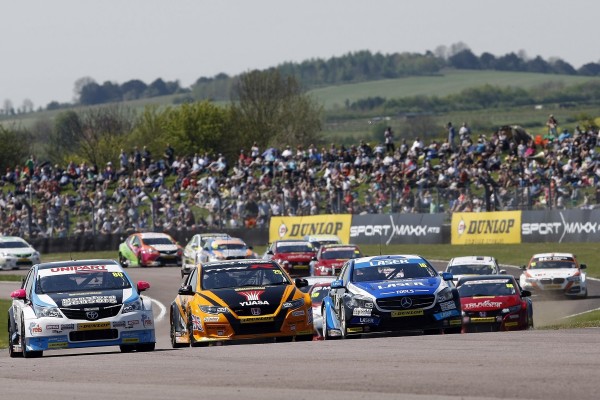
There was little option but to act and with the big grid and congested pitlane, a mandatory pit stop wasn’t a feasible option. Changes to boost levels to reduce speeds were also suggested, but would have simply opened a whole other can of worms.
In the end, cutting laps – whilst not ideal – was the logical way to deal with a situation that could be blamed more on circumstances than on the actions of one individual group; circumstances that may not be seen again for a number of years.
And if they are, you can rest assured that everyone involved in the series will have worked hard to make sure the focus is firmly on the racing.
